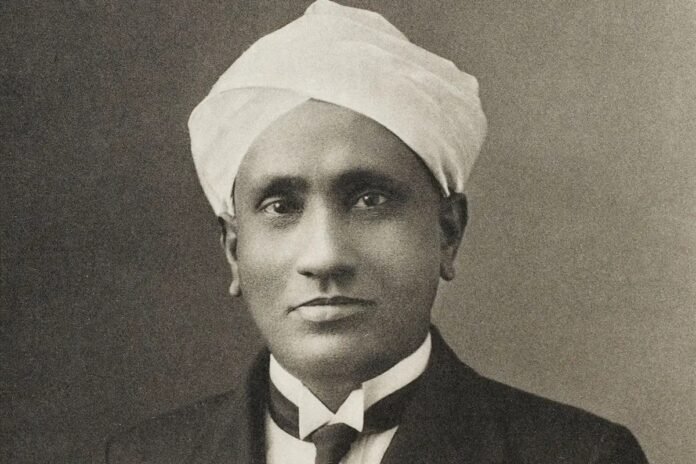Vaidehi Bhargava
On November 7, India celebrates the birth anniversary of Sir Chandrasekhara Venkata Raman, widely known as C.V. Raman, one of the country’s most distinguished physicists. Born in 1888 in Tiruchirappalli, Tamil Nadu, C.V. Raman’s contributions to science, particularly in the field of physics, have earned him a place among the world’s greatest scientific minds. His discovery of the Raman Effect, which describes the change in wavelength of light that occurs when it is deflected by molecules, won him the Nobel Prize in Physics in 1930—the first Asian to receive this honor in science.
Early Life and Academic Journey
Raman’s journey in science began at a young age. Coming from a family that valued education, he was an exceptional student with a keen interest in science and mathematics. His father was a teacher, which fostered an environment of learning and curiosity. At just 16, Raman graduated with a degree in Physics from Presidency College, Chennai, where he later completed his master’s degree, topping his class. Despite his achievements, Raman’s path to scientific success was not without struggles.
Career and Struggles
In early 20th-century India, opportunities in scientific research were limited, and funding was scarce. Raman joined the Indian Finance Service in Calcutta (Kolkata) as an Assistant Accountant General. Despite the demands of his job, Raman’s passion for science was unwavering. He conducted research at the Indian Association for the Cultivation of Science (IACS) during his spare time, often working late into the night. His determination paid off, as his work on acoustics and optics began to gain attention in the scientific community.
In 1917, Raman was offered a professorship at the University of Calcutta, allowing him to leave his government job and focus on scientific research. This transition marked a pivotal point in his career, leading to groundbreaking discoveries in the field of light scattering. Raman’s work was innovative and daring, as he ventured into areas of physics that were largely unexplored.
The Discovery of the Raman Effect and Nobel Prize
In 1928, while studying the scattering of light, Raman made a discovery that would change the course of physics—the Raman Effect. This phenomenon revealed that when light passes through a transparent material, a small fraction of the light emerges in a different direction with a different wavelength. This discovery provided new insights into molecular and atomic structure and laid the foundation for advancements in various scientific fields. In 1930, Raman became the first Indian to win the Nobel Prize in Physics, bringing immense pride to India.
Legacy and Impact
Raman’s legacy goes beyond his scientific achievements. He inspired generations of Indian scientists and laid the groundwork for India’s scientific research institutions. He later served as the director of the Indian Institute of Science in Bangalore and established the Raman Research Institute. His commitment to scientific inquiry and his belief in India’s potential in the field of science continue to inspire to this day.
On C.V. Raman’s birthday, we celebrate not only his groundbreaking contributions to science but also his unwavering spirit, which triumphed over the limitations of his time, proving that dedication and perseverance can indeed change the world.


